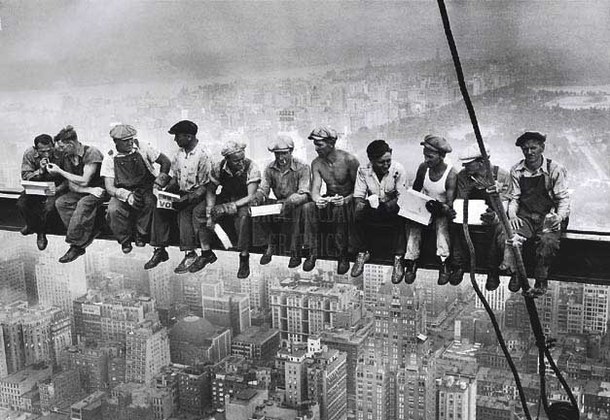‘It’s all fun and games, until someone looses an eye”
A hackneyed expression to be sure, but true. Nobody likes to think how something can go wrong; how people can be hurt in a situation; never mind plan against it. Where’s the fun in that? But even fewer people like dealing with these types of situations when they do occur. They are stressful at least and scary at worst. People’s health and safety is paramount when it comes down to it.
Extreme working environments tend to get the most buzz, when it comes to health and safety. Work environments where large machinery is used or people are working at heights or great depths or working with chemicals and extreme temperatures. Work environments that hiss and clang and are impressive to all of the senses. The average general office doesn’t usually spring to mind. However, the office cannot be left out. They say that the most accidents happen in the home or the most car accidents happen very close to home. Why? I think it’s because people let their guard down. They relax. Accidents happen, when we aren’t paying attention. Now I’m not an advocate for going around constantly wearing a hard hat doing risk assessment on the go. Come on. That isn’t realistic. But treating life like it isn’t going to happen to you; is a recipe for disaster.
Health and Safety in South Africa is legislated under the Health and Safety Act and basically tasks employers with ensuring the safety of their employees; and employees with the active prevention and reporting of potential dangerous situations. Offices must have sufficient fire exits in case of emergency evacuations. There must be a designated meeting area outside, to do a head count and ensure that everyone got out of the building. The office has fire extinguishers, that are regularly checked and maintained. The staff should know how to use them. Something about “pulling a tab, spraying and holding on”. There are staff that have basic first aid training, and a first aid box to deal with minor accidents. There’s security services; alarm systems, panic buttons and physical security guards. Employees have the responsibility to not only look out for themselves but also their colleagues and their employer as a whole. An employee will notice a problem (for example a shorting wall plug) before the employer and they must report it. Reporting faulty equipment as well as wiring and plumbing is essential in ensuring a safe working environment. The prompt and correct fixing of said problems is even more important. Employees must be vigilant with their own safety, as this ensures the safety of others. External doors must be closed at all times, preventing unknown persons from entering the premises. Those that smoke must make sure that their cigarette butts are completely extinguished to prevent any unnecessary and dangerous fires. Spills of any sort have to be mopped up to prevent slips and falls. If any glass gets broken, this must be swept up immediately. The correct and responsible use of equipment is paramount at all times, especially kitchen equipment. Anything that produces boiling water or scalding steam must be shown the due respect. No one wants to have to deal with blistered hands or worse. The new coffee machine sounds like ye ol’ steam locomotive when it gets going. The amount of pressurised steam in that thing, is quite unnerving. (They’ve been known to explode, you know that right?) There’s a level of common sense required when dealing with people’s safety. Common sense sometimes goes walkabout, and one silly decision can have far reaching consequences. I tend to refer to it as “The Stupid”. It’s a moment in time where a choice is made. “The Stupid” chooses short quick fixes over the time consuming, safer and ultimately smarter choice. “The Stupid” won’t have to worry about where the first aid kit is or how the fire extinguisher works, because it will inevitability be someone else who will have that responsibility, as “The Stupid” will be unconscious or on fire at that point.
People can be hurt or dead in a blink of an eye. The weird and varied ways people can be hurt or killed, is staggering and frankly, terrifying. No one can live their lives wrapped in bubble wrap, but showing a complete disregard for the safety of themselves and others is the ultimate in disrespect. You can’t go back. None of us can. We can control only so much, and that little we can control can go a long way in ensuring a safe and supportive work environment.
About Claire Donaldson
I started working at Leads 2 Business in February 2005, and have served as Head of Department of Daily Tenders from 2007 until the present. I oversee both the Daily Tenders South Africa and Africa Departments.
- Web |
- More Posts(66)



